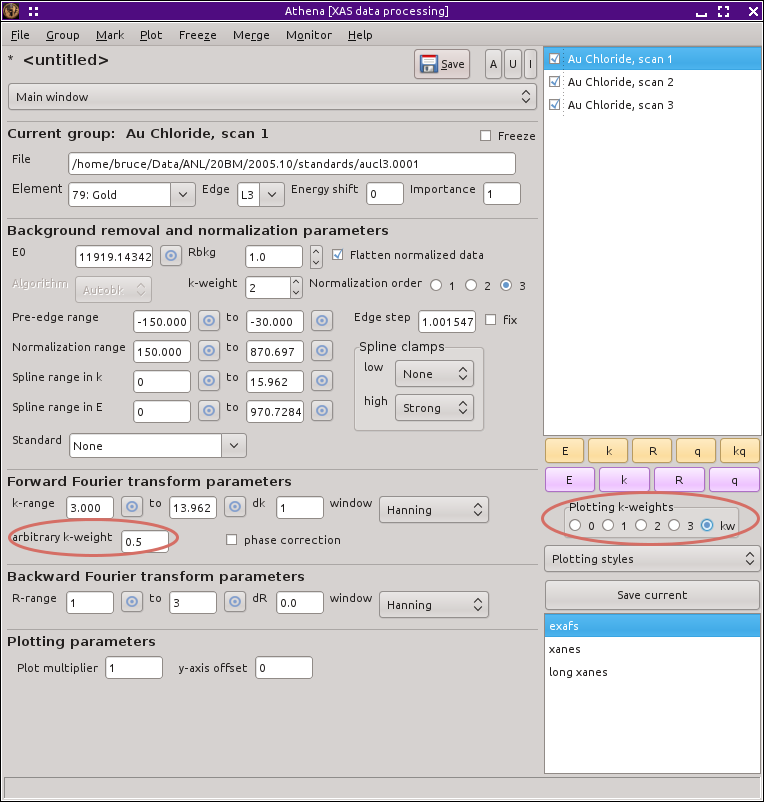6.5. k-weights in plots and Fourier transforms¶
It is common practice in EXAFS to multiply χ(k) by different k-weights. That is, the χ(k) array is multiplied point-by-point by k-array. For k1 weighted data, χ(k) at k=5 is multiplied by 5 and χ(k) at k=10 is multiplied by 10. Similarly, for k2 weighted data, χ(k) at k=5 is multiplied by 25 and χ(k) at k=10 is multiplied by 100. This has the effect of amplifying the spectrum at the high-k end. Since the oscillations attenuate quickly after the edge, k-weighting is a way of making the high-k oscillations visible in a plot.
A common approach to choosing a k-weight is to make the size of the oscillation roughly constant over the range of the data. Weighting data in that manner makes all parts of the data rage contribute equivalently. When Fourier transformed, the χ(R) spectrum is then dominated by the oscillatory structure of χ(k). The Fourier transform of an “under-weighted” spectrum may be dominated by a low-R peak representing the attenuation of the χ(k) spectrum.
k-weighting is also used to change the emphasis of different contributions to the measured χ(k) spectrum. Low Z elements such as O and C have scattering amplitudes that peak and low-k and become quite small at high-k. Heavier elements, such as the transition metals, have small scattering amplitudes at low-k but continue to have large scattering amplitude at very high values of k. Very heavy elements, such as Pb or Sn, have minima in their scattering amplitudes around 5 to 7 Å-1. (See my presentation on the Ramsauer-Townsend effect.)
By weighting χ(k) with different k-weightings, the low and high portions of the χ(k) spectrum can be differently emphasized in a Fourier transform. Doing so may help you better understand your data.
The k-weighting is controlled by the bank of check buttons labeled 0, 1, 2, 3, and kw, and located just beneath the purple plot buttons. This is highlighted in the figure below The buttons selected determines the k-weighting used in a plot of χ(k) data or in a Fourier transform.
The k-weight button labeled kw is used in conjunction with the «arbitrary k-weight» parameter. When the kw button is selected, the χ(k) data are weighted by the value of the «arbitrary k-weight». This can be used in a number of ways. The simplest is if you simply want a non-integer weight. If you want to overplot two different data groups each with a different k-weight, that can be done by setting the «arbitrary k-weight» of each group appropriately.
DEMETER is copyright © 2009-2016 Bruce Ravel – This document is copyright © 2016 Bruce Ravel
This document is licensed under The Creative Commons Attribution-ShareAlike License.
If DEMETER and this document are useful to you, please consider supporting The Creative Commons.

